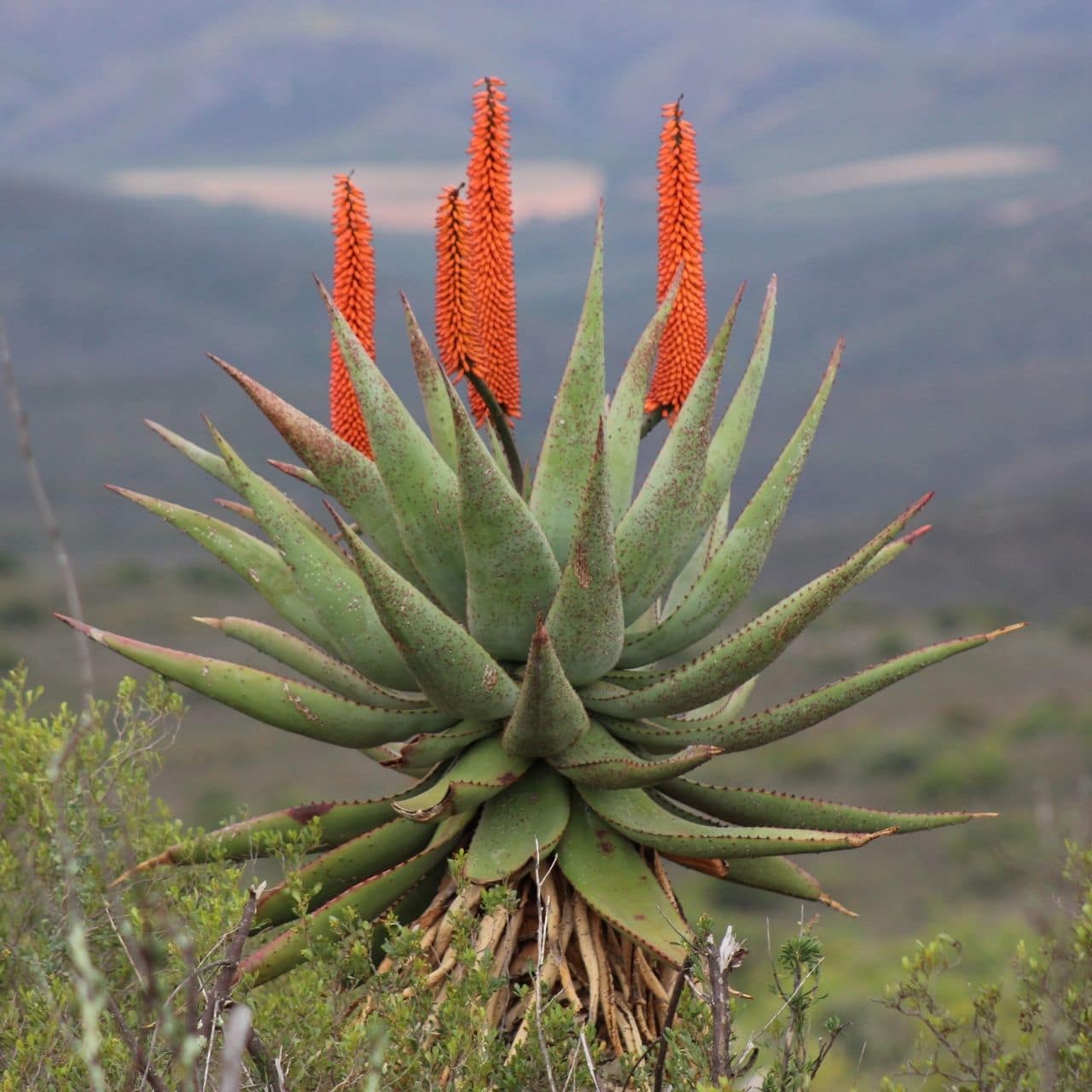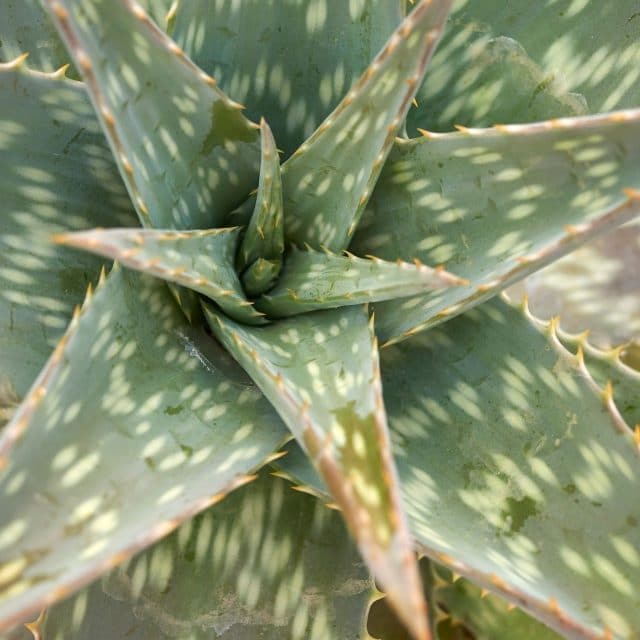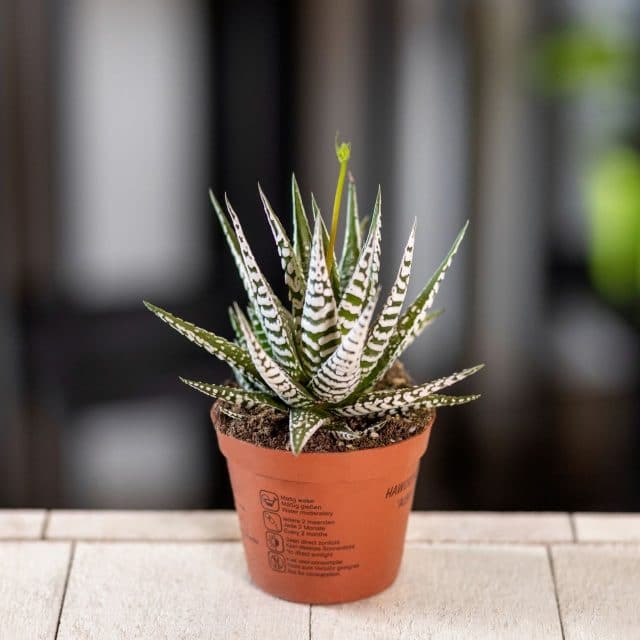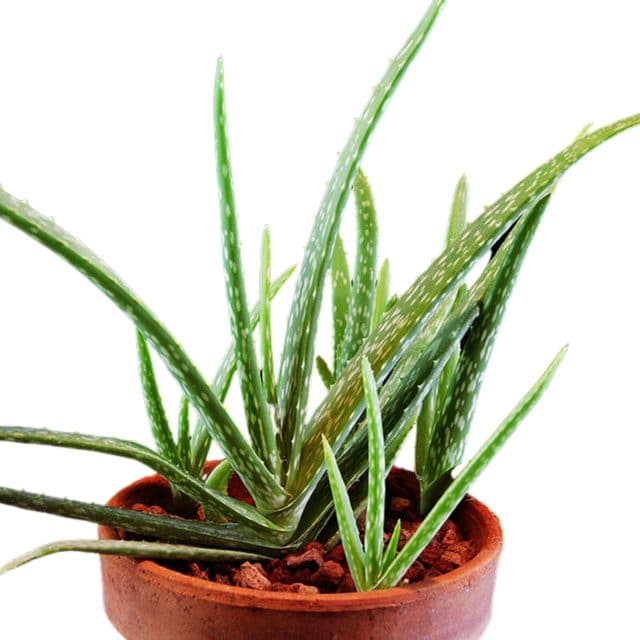Types of Aloe: let's find out the main ones
Aloe is a genus of xerophilous succulent plants of the Asfodelaceae family that groups together 500 different plant species.
The genus is native to Africa and the Arabian Peninsula , but its medicinal uses have made it cultivate all over the world. Most species look very similar, with thick fleshy leaves growing in rosettes from a central stem. Some Aloes bloom after developing tall flower stalks; others do not.
Aloe plants are popular houseplants because they require little care and can survive without water for long periods of time.
Let’s find out which are the most used and most famous Aloe species.
Aloe Vera (Aloe Barbadensis Miller)
Aloe Barbadensis Miller , or Aloe Vera , is a succulent plant without a stem or with a very short stem that grows up to 60-100 cm in height, spreading by offset.
The leaves are thick and fleshy, green to gray-green in color , with some varieties showing white spots on the surface of the upper and lower stem. The leaf margin is serrated and has small white teeth.
Aloe vera forms a dense rosette of leaves that vary in height between 6 inches (15cm) and 24 inches (60cm).
They look great in containers or in your garden when paired with other sun-loving species such as agave , cactus and milkweed species . Just make sure you give them room to grow – they can get big!

Aloe Arborescens Miller
Aloe Arborescens , also called Torch Aloe , is a large aloe that looks almost like a tree with its numerous stems. It can grow up to 2 meters tall and has stiff, lance-shaped leaves armed with sharp white teeth along the edges.
Its orange-red flowers bloom in dense clusters during the summer .
Aloe Arborescens juice has been used in medicine since Roman times and can be used to relieve constipation and intestinal disorders, in addition to its countless purifying properties on the body. Aloe Arborescens requires well-drained soil in full sun or light shade to thrive.

Aloe Ferox Miller
Aloe ferox is a robust, thick-leaved species of Aloe, native to the countries of Congo and Angola . The Latin root ” ferox ” means ” fierce “, which embodies the brave and inflexible nature of this plant: it can withstand harsh climates and grow in arid desert regions, making it an ideal desert plant.
Moreover, it is also among the most common Aloe species, with several cultivars available all over the world. The most notable feature of this particular species is its ability to resist long periods without water; hence its name Aloe Ferox , which means ” fierce Aloe “.

Aloe Juvenna
Aloe Juvenna is a well-known branched succulent plant with thin stems, from erect to limb, with robust and triangular leaves and a small compact rosette at the apex of the florescence.
It grows in clusters of peduncles up to 60 cm long which fork from the base. In broad daylight, the leaves are green with reddish to brown tones and distinct creamy-white spots. The marginal teeth on the leaves appear sharp.
It is native to southwestern Kenya as far as northern Tanzania , which is evident given how much it loves the sun .
Brandham and S. Carter, two European botanists, discovered this species; its full scientific name is Aloe juvenna Brandham and S. Carter. The particular epithet “juvenna” (young) derives from the Latin “iuvenīlis” from which the English term “ juvenile ” derives.
The name derives from the labeling of this plant when it was first discovered due to its small size , referring to it as ” dwarf aloe “.
The common name ” tiger tooth ” comes from the menacing pointed edges of its leaves. These triangular leaf series of Aloe Juvenna are renowned for their dense cluster.
One fact that distinguishes Aloe juvenna from any other species in the region is that this species is tetraploid . Therefore, it has a double set of chromosomes ( 28 ) instead of 14 . Another name for tiger tooth aloe is ” Zanzibar aloe “.

Aloe Socotrina (Aloe Perryi)
Although Aloe Socotrina is often called ” wild aloe “, it does not grow spontaneously everywhere. Indeed, it has the distinction of being an Endemic plant of the island of Socotra (Yemen), the “southern promontory of Africa”!
This succulent has a rough and speckled greyish-green leaf. The stem is pointed and thick with leaves about 20 cm long. It’s not hard to spot when you’ve found one!

Aloe Maculata
One of the most popular aloes, Aloe Maculata is native to South Africa and commonly referred to as Aloe Saponosa or Aloe Zebrata . It grows in tufts up to about 30-40 cm tall and spreads easily. Its thick, fleshy leaves are flecked with white and grow upward from a single stem that often has protruding ridges. In spring, orange flowers bloom on tall, branching stems above the foliage.
A member of the laxative group of aloe (meaning it contains anthraquinone glycosides ), Aloe maculata is also known for its medicinal properties . The sap can be used as a remedy for sunburn, bee stings, or other mild skin irritations; however, it should never be ingested in abundance due to its laxative properties.

Aloe Variegata (Gonialoe Variegata)
The Aloe Variegata is a species of flowering plant of the Aloe genus native to South Africa . It has fleshy triangular leaves with white spots and teeth along the margin, hence its common name variegated aloe.
The color of the flower can be red , orange or yellow . It blooms during the winter (June to August). In warmer regions it can bloom all year round.

Aloe Chinensis
Aloe Chinensis , native to South Africa , is a small aloe plant. The leaves are light green and pinkish white , with white spots on them.
This type of aloe grows best in well-drained, nutrient-poor soil. These plants grow best in pots, but they can also be grown outdoors if the weather is warm enough.
Aloe Chinensis is a low maintenance plant that will grow quickly when its basic needs are met: full sun or partial shade , moderate water (but keep it drier during the winter), well-drained , nutrient-poor soil (which means you don’t need to fertilize).

Where can you find Aloe plants?
Aloe plants can be purchased from local agrarians or florists , as they are plants in great demand. However, while finding an Aloe Vera plant can be easy enough, the same cannot be said for other Aloe species.
We therefore advise you to search for them on the internet from farmers specialized in the cultivation of Aloe, such as we at AloeVonderweid .
Visit our Shop to take a look at our Aloe Plants !





